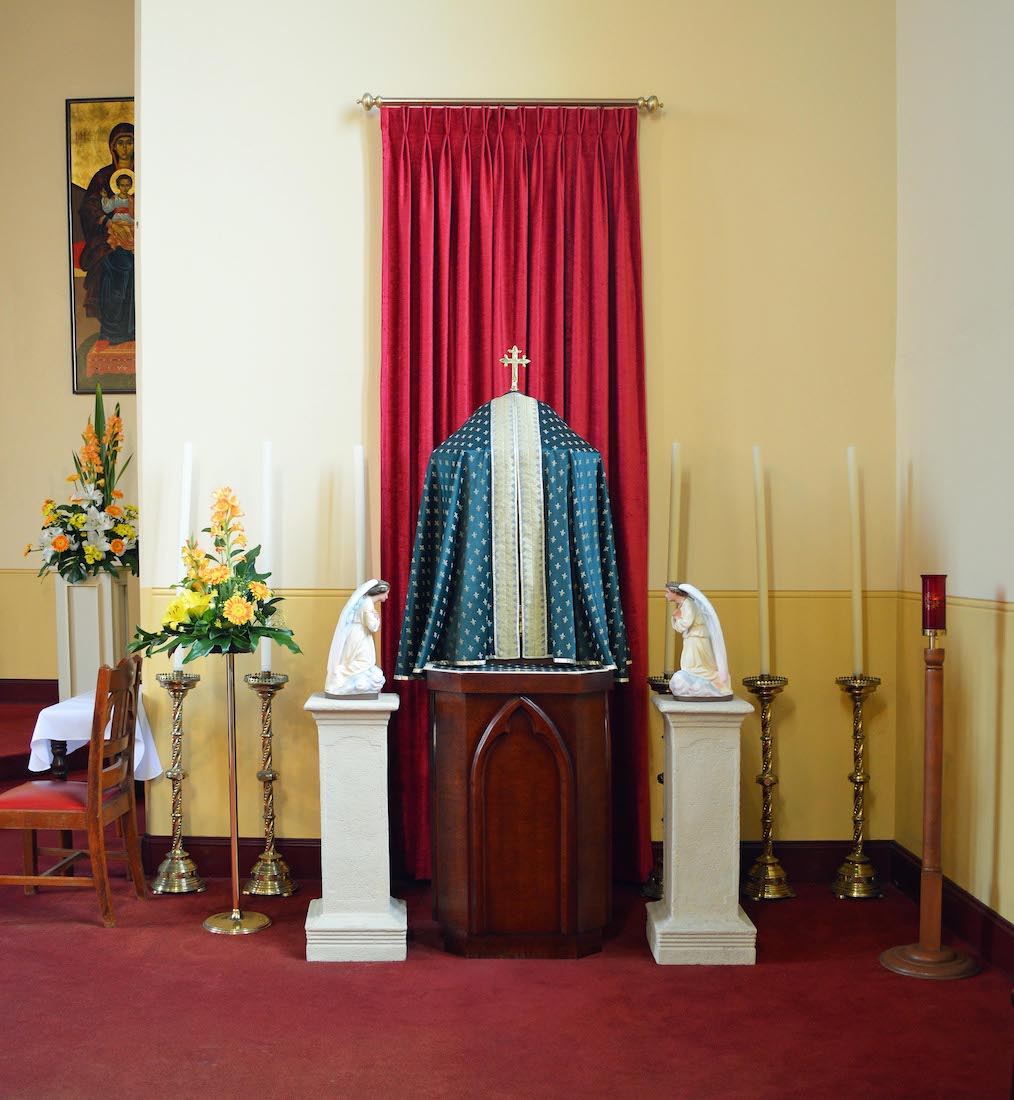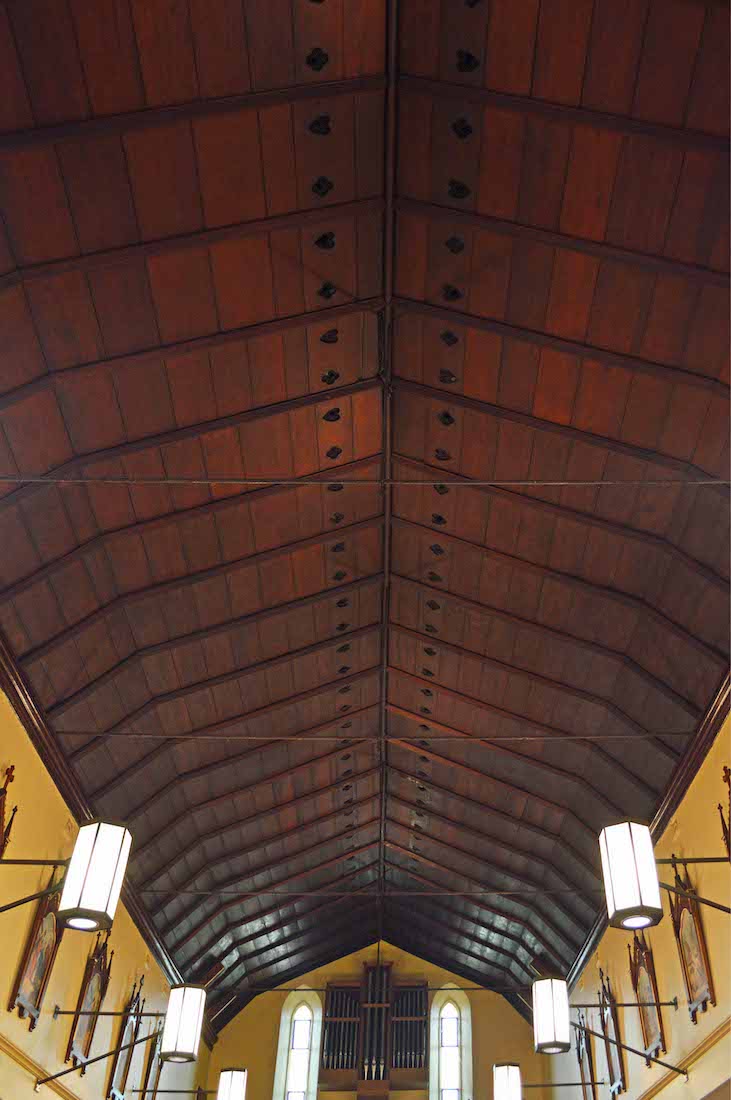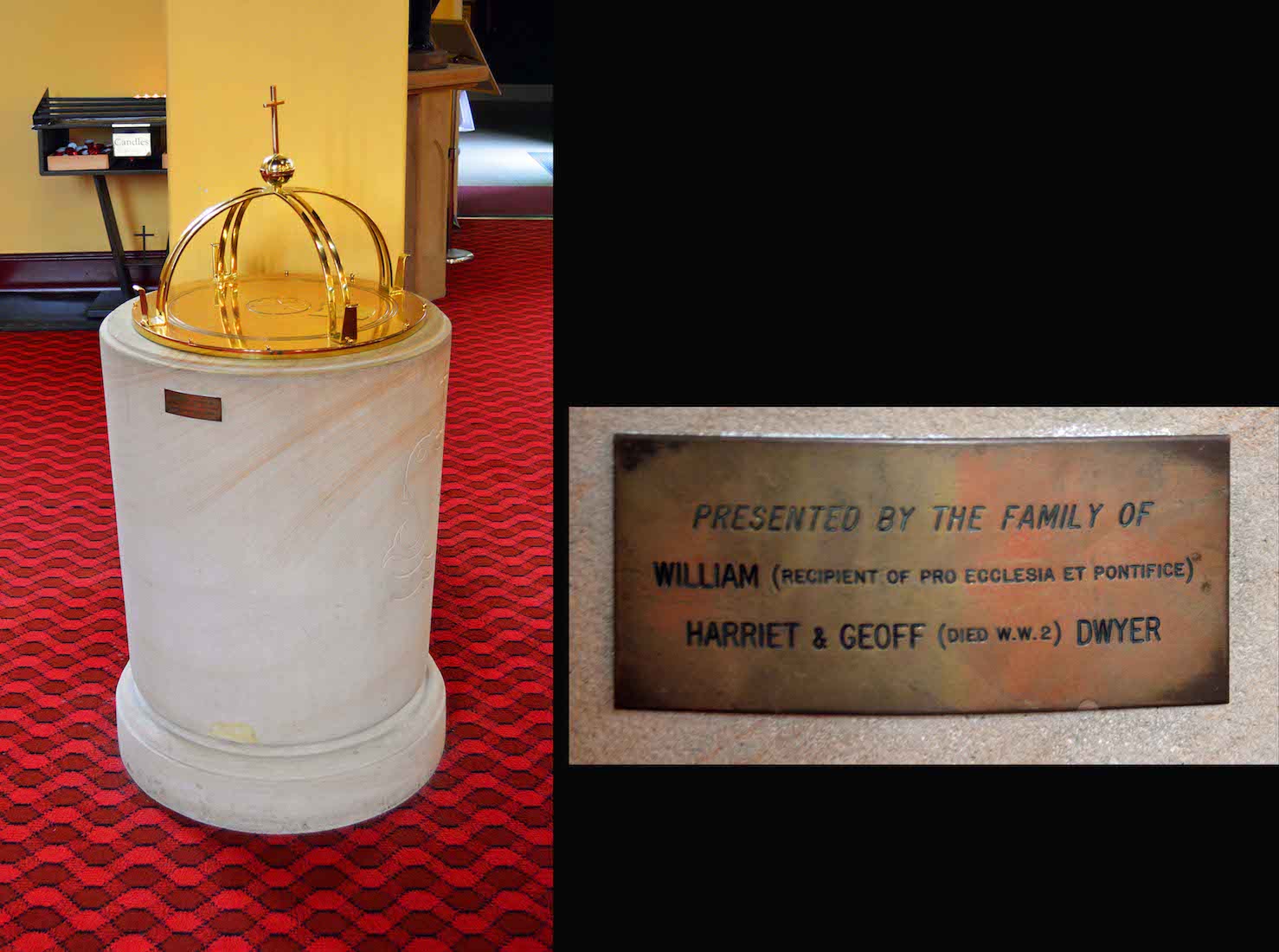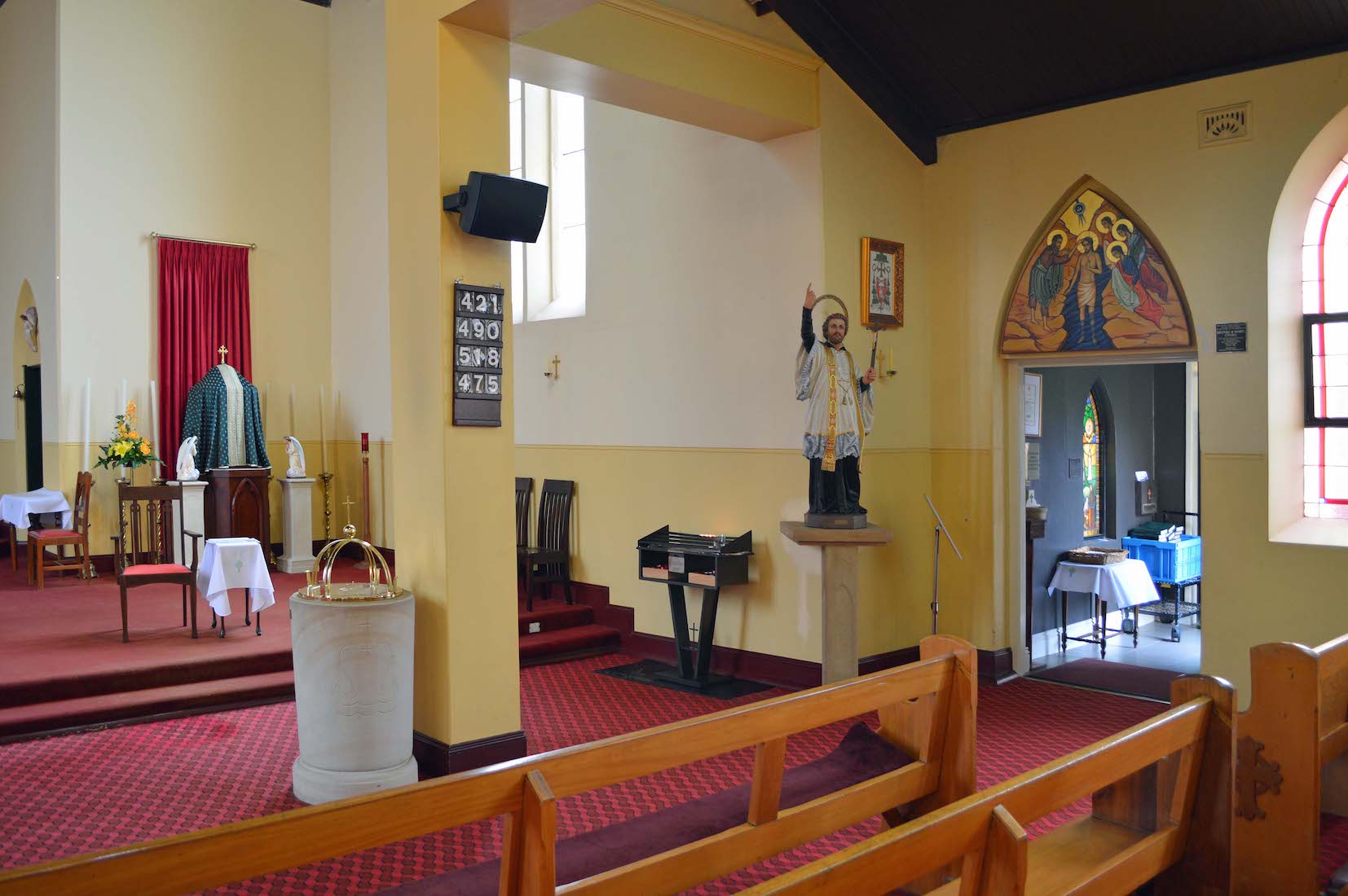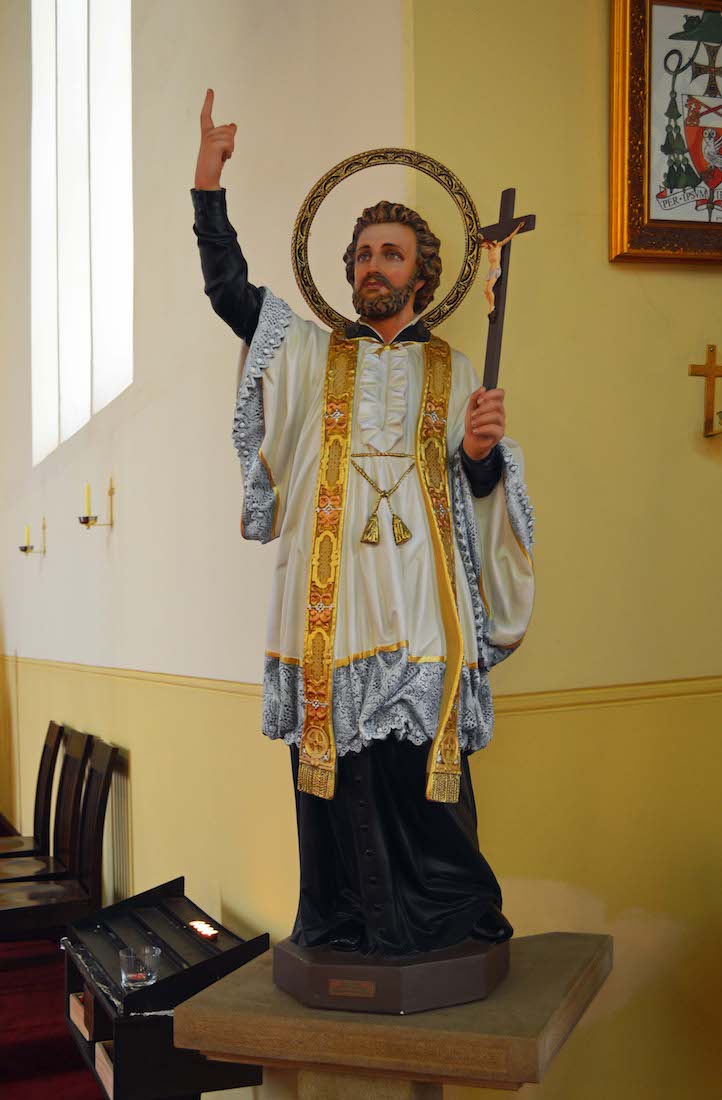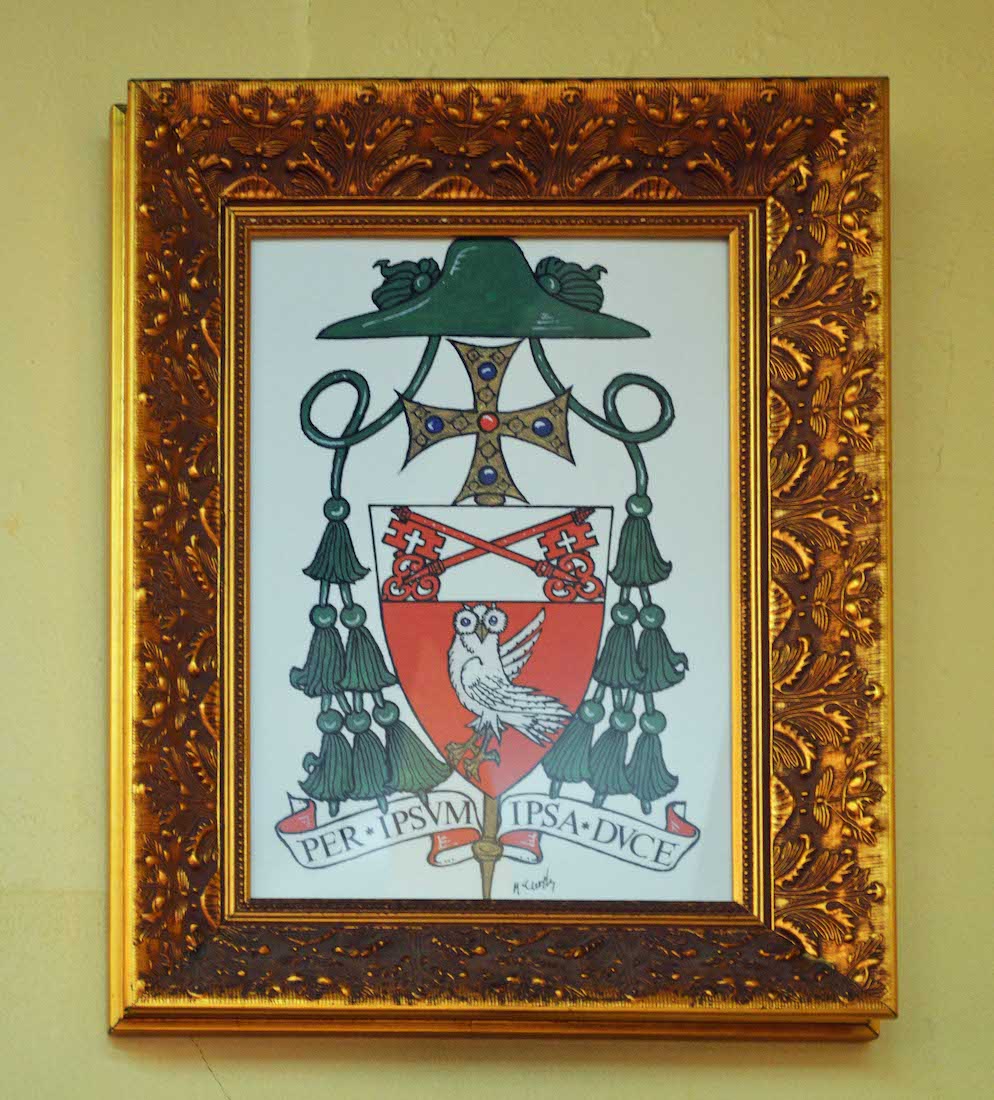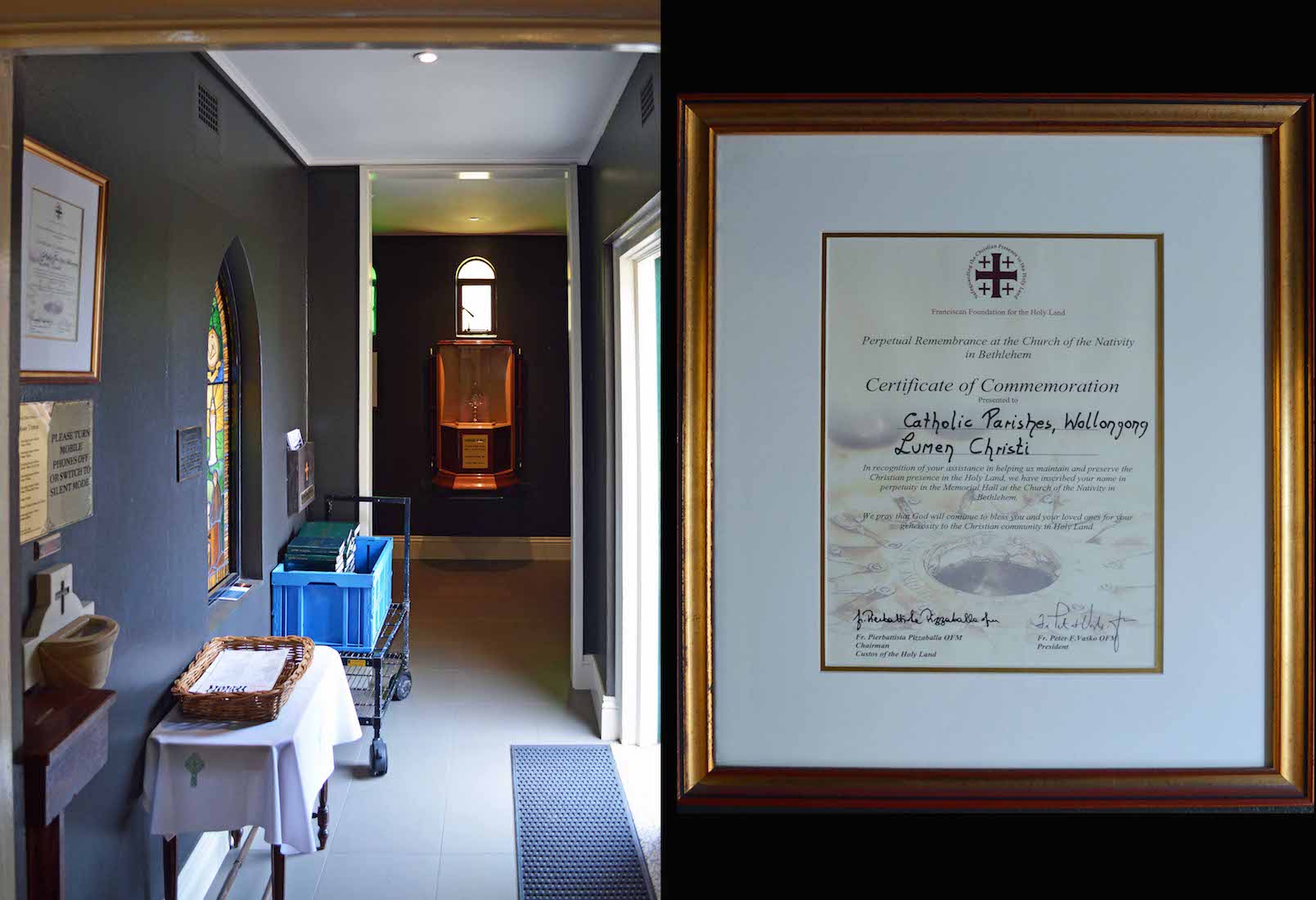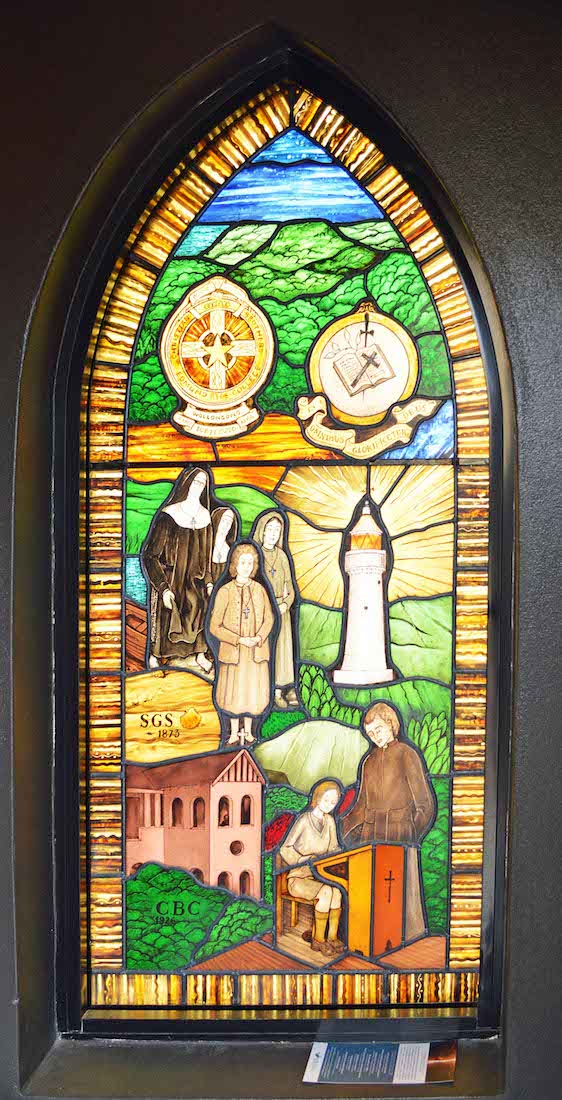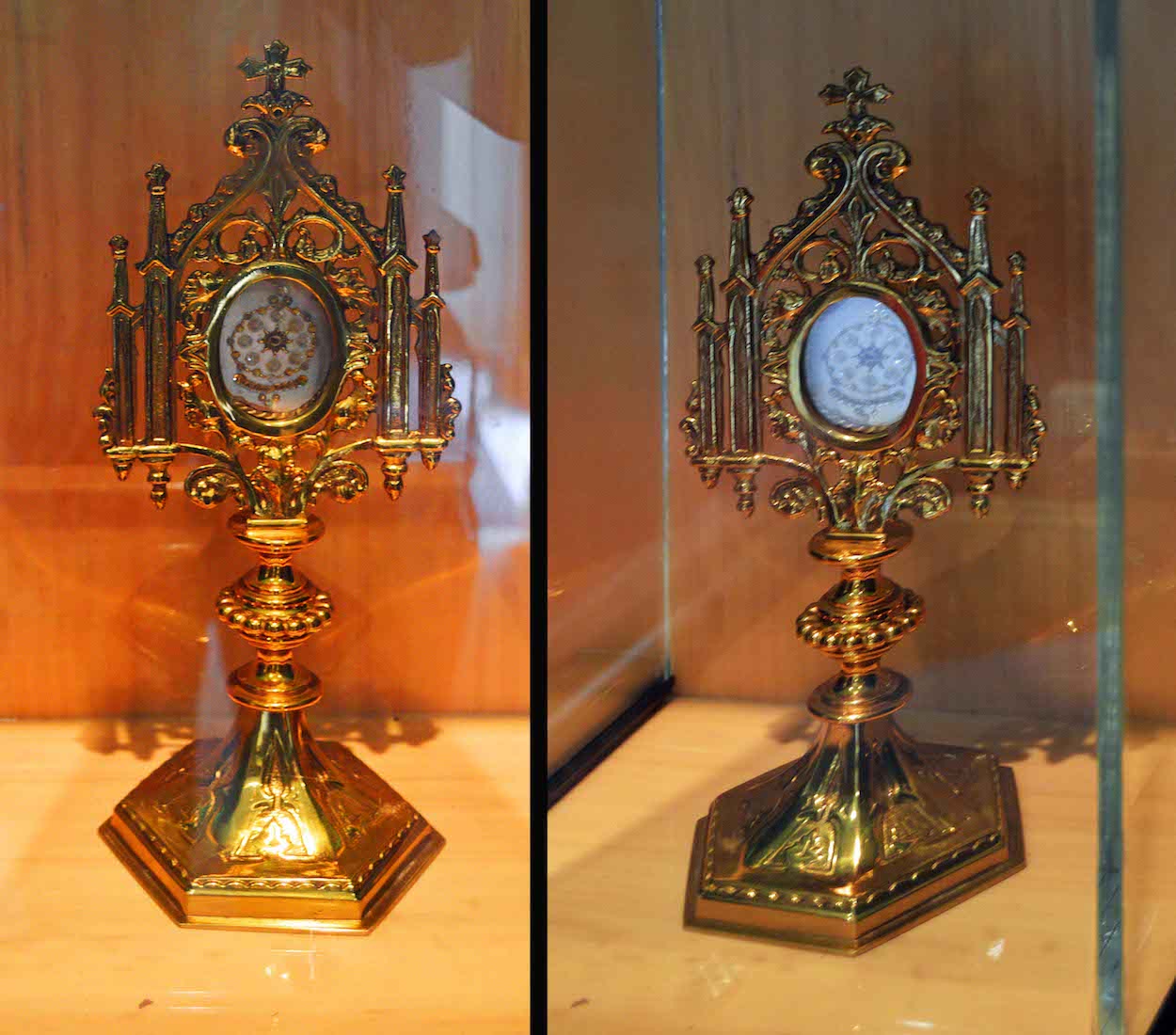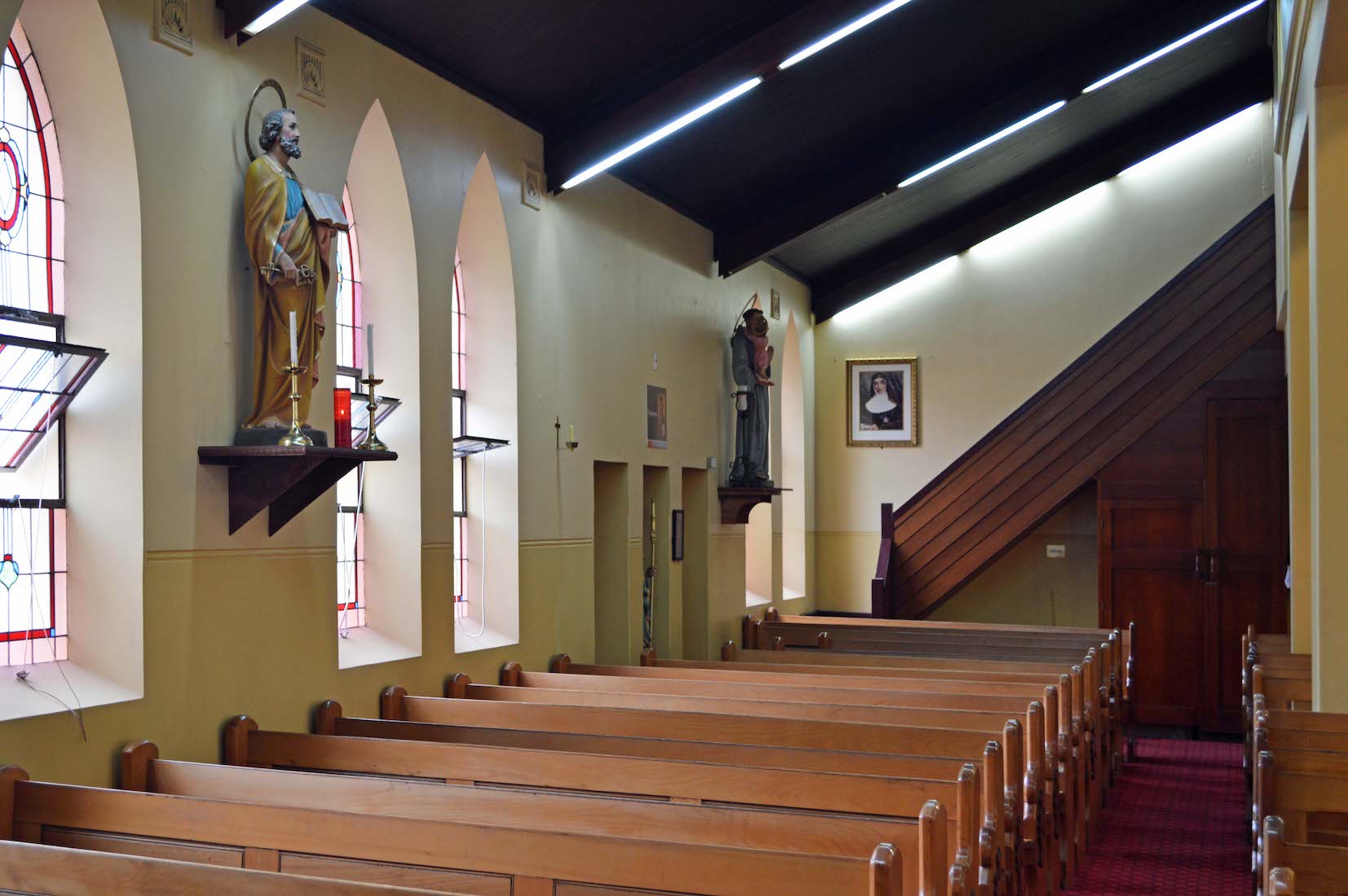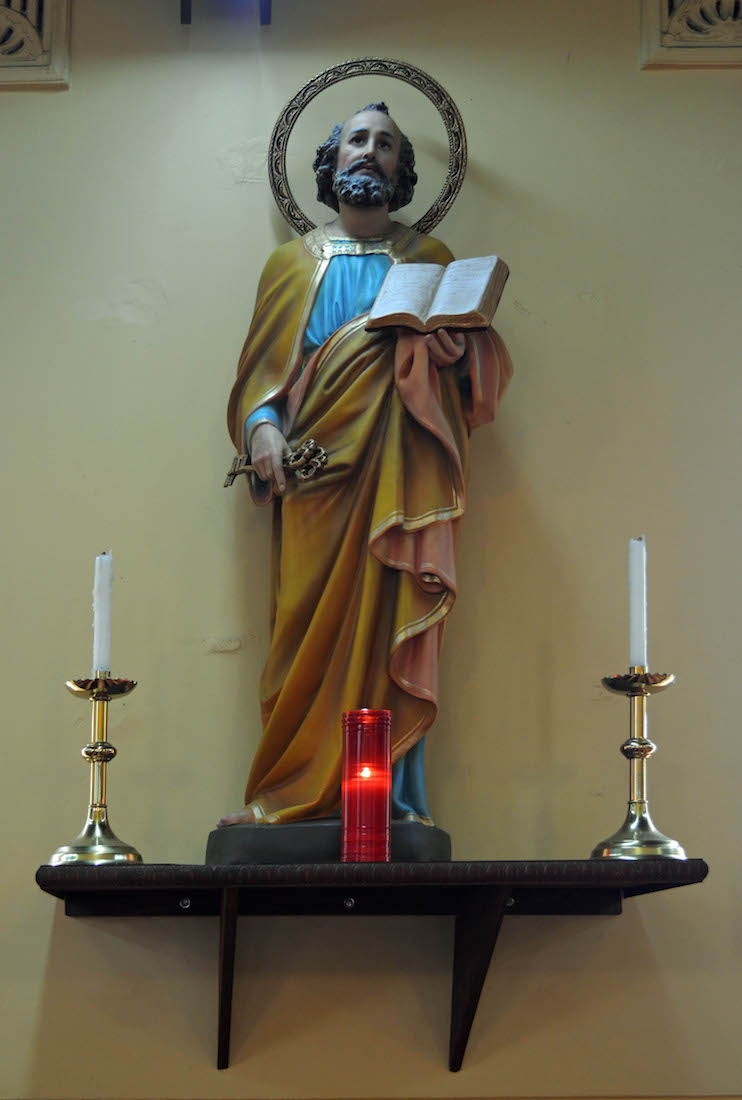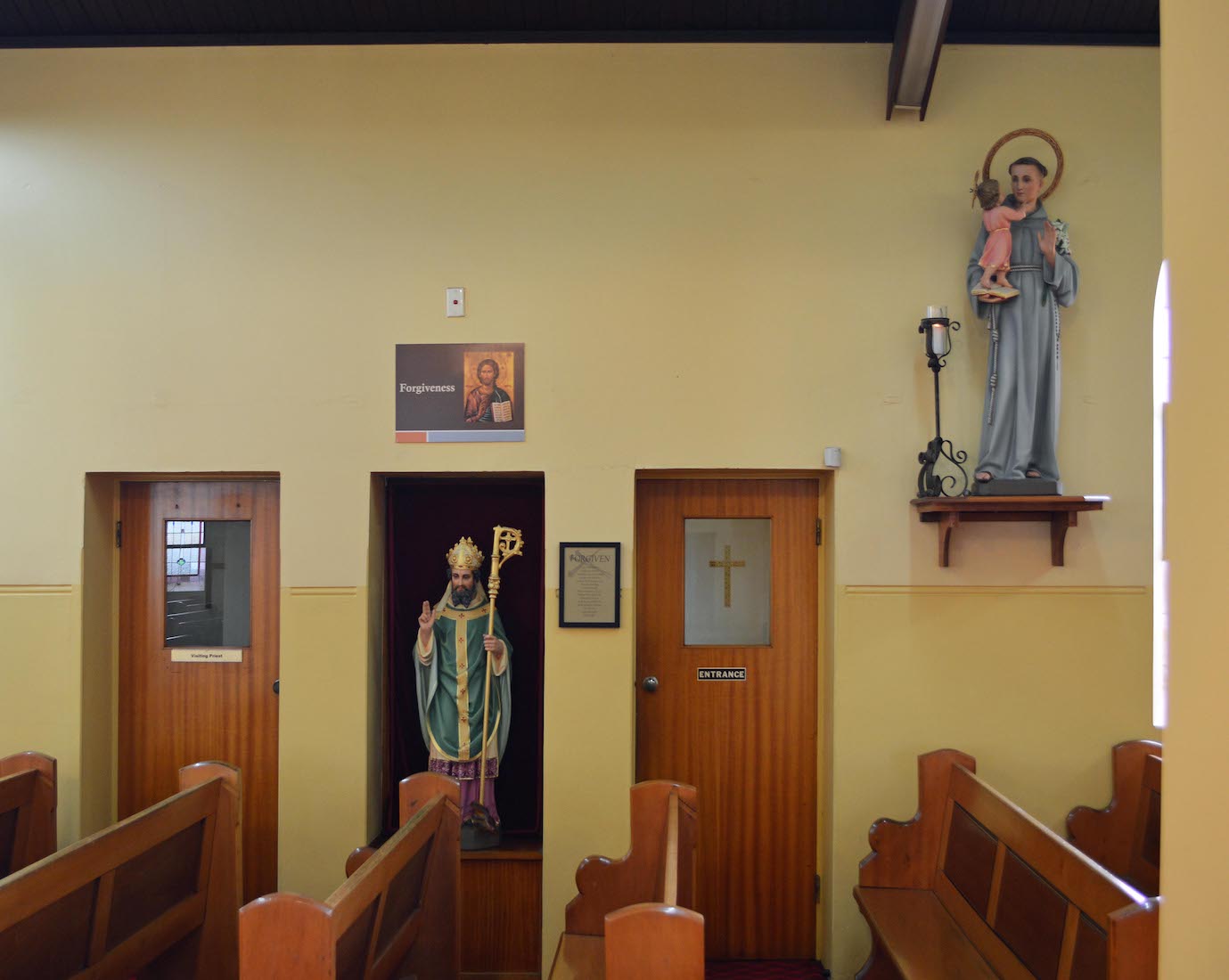
The door on this side has an angel above, and a small bell alongside, used to indicate the beginning of a Mass. INDEX
63. CHAPEL ANGELS
These are the cutest little angels! In fact, angels are spiritual beings, often described as God’s messengers. They are much more likely to be rugged males (like the Archangels Michael and Gabriel) than beautiful damsels. But they are often associated with a blaze of light, so perhaps it is not always easy to tell.
64. NAVE ROOF
The nave roof is a solid timber construction. The word ‘nave’ has the same derivation as our word ‘navy’, and the inverted hull shape is apparent here.
65. FONT
The baptismal font is of simple form and modern design. The Sacrament of Baptism is available to anyone desiring the Sacrament. It begins one’s journey in life as one of God’s beloved sons or daughters. As the priest pours water three times over the head of the person to be baptized, he prays: “I baptize you in the name of the Father, and of the Son, and of the Holy Spirit. Amen.” At this point the baptized person begins a new life in Christ.
66. SOUTH EAST VIEW
This more distant view of the South Eastern corner of the Cathedral brings us to a prominent statue near the exit door. There is a framed picture by the statue, and an icon above the door.
67. ST FRANCIS XAVIER
St. Francis Xavier was beatified in 1619, and canonized in 1622. In 1624 he was made co-patron of Navarre alongside Santiago. Known as the ‘Apostle of the Indies’, and the ‘Apostle of Japan’, he is considered to be one of the greatest missionaries since St. Paul.
68. BISHOP’S CREST
This Bishop’s (Diocesan?) crest has various recognizable features including the cross and crossed keys. The motto is ‘per ipsum ipsa duce’, meaning ‘through him, herself leading’. This is a reference to the doxology of the Eucharistic prayer, and to the Blessed Virgin Mary.
69. BAPTISMAL ICON
This icon of the Baptism of Jesus in the Jordan River is above the doorway to the St Francis Xavier Chapel.
71. SOUTH ENTRY WINDOW
This window is a pair to the window on the North side, this one celebrating Catholic contributions to education in the Wollongong area.
72. DEAN RIGNEY MEMORIAL
At the rear of the St Francis Xavier Chapel is a memorial to Dean John Rigney. He was born in Ireland in 1814, ordained in 1837 and arrived in Sydney in 1838. The Missionary District of the Illawarra was established in 1838 under his direction. Whilst in the Illawarra district his average annual mileage on horseback was 3,252. He was very concerned about the welfare of the Aborigines, often bringing them together at Wollongong for what Archbishop Polding called ‘little tea parties’.
73. ST FRANCIS XAVIER CHAPEL
The St Francis Xavier Chapel is relatively unadorned and contains a reliquary. The notice below reads: Pilgrimage of Grace •• National Journey of the Relic of St Francis Xavier •• September–December 2012 •• ‘St Francis Xavier, pray for us’.
74. RELIQUARY
The body of St Francis Xavier is now in the Basilica of Bom Jesus in Goa, where it was placed in a glass container encased in a silver casket on 2 December 1637. However, there are other relics of the saint, and details are given on the accompanying sheets.
75. INFORMATION SHEETS
These three sheets are from left: A prayer of St Francis Xavier, information about the Year of Grace and the construction of the reliquary, and information about St Francis and the obtaining of the relic.
76. STATIONS VIII – XIV
Leaving the chapel we return to the nave. High above are the 14 stations of the Cross. Displayed here is half the set: Stations VIII – XIV.
77. MURRAY MEMORIAL
High on the South side of the nave is a memorial to Rev Joseph Murray. who died in Wollongong on 22 Aug 1852. His full name was (Rev) Thomas Joseph Malachy Murray, and he appears to have served with the military.
78. SOUTH NAVE
Looking back along the South nave we observe two saints and a photograph of St Mary MacKillop.
79. ST PETER
The first saint is St Peter, identifiable by the Keys of the Kingdom which he carries. This comes from Matthew 16, where Jesus says: And I tell you that you are Peter (Petros), and on this rock (petra) I will build my church, and the gates of Hades will not overcome it. I will give you the keys of the kingdom of heaven; whatever you bind on earth will be bound in heaven, and whatever you loose on earth will be loosed in heaven.
80. SAINTS AND CONFESSIONALS
As we move to the back of the Cathedral, we find St Patrick hiding away between the confessionals.


